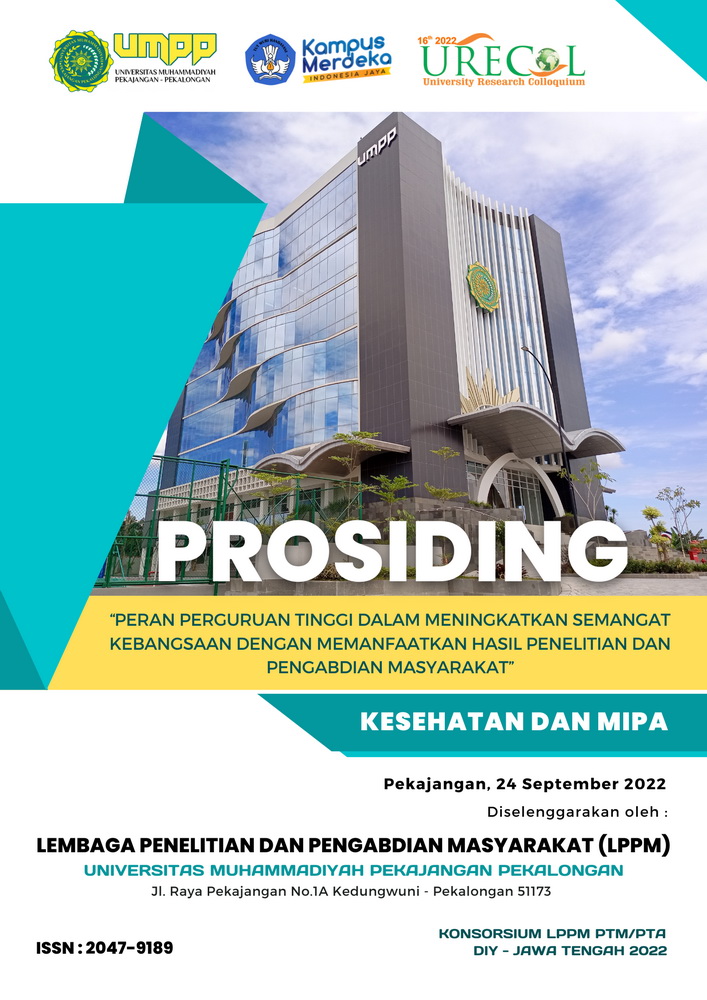Sit to Stand Exercise Terhadap Peningkatan Keseimbangan Pasien Pasca Stroke di Posyandu Melati 1 dan 3 Karangasem
Keywords:
fisioterapi, keseimbangan, lansia, latihan duduk ke berdiri, strokeAbstract
Stroke adalah defisit neurologis fokal akut yang disebabkan oleh lesi vascular, onsetnya tiba-tiba dan gejalanya berlangsung lebih dari 24 jam, jika pasien bertahan. Stroke berdampak terhadap kehidupan masyarakat yang terjadi secara tiba-tiba baik pada individu maupun keluarga dan banyak yang tidak siap untuk menghadapi proses kecacatan serta rehabilitasi akibat kondisi tersebut, sehingga banyak individu yang tidak dapat bekerja dan membutuhkan bantuan pasca stroke. Pasien stroke akan mengalami banyak gangguan-gangguan yang bersifat fungsional dan mempengaruhi kualitas hidup pasien. Untuk mengembalikan kemandirian lansia secara seimbang untuk menopang badan dan beraktivitas, dapat dilakukan latihan sit to stand. Sebelum dan setelah melakukan latihan sit to stand, dilakukan pemeriksaan keseimbangan menggunakan alat ukur yang valid yaitu berg balance scale. Latihan sit to stand merupakan tindakan fungsional yang penting pasca stroke, dengan latihan yang dilakukan secara rutin pada pasien pasca stroke diharapkan terjadi peningkatan keseimbangan pada pasien pasca stroke.
References
[2] J.-D. Lee, T.-C. Chang, S.-T. Yang, C. Huang, F. Hsieh, and C. Wu, "Prediction of quality of life after stroke rehabilitation," Neuropsychiatry, vol. 6, pp. 369-375, 01 2016, doi: 10.4172/Neuropsychiatry.1000163.
[3] M. J. M. Ramos-Lima, I. C. Brasileiro, T. L. Lima, and P. Braga-Neto, "Quality of life after stroke: impact of clinical and sociodemographic factors," (in eng), Clinics (Sao Paulo), vol. 73, p. e418, Oct 8 2018, doi: 10.6061/clinics/2017/e418.
[4] Y. S. Yeoh et al. , "Health-related quality of life loss associated with first-time stroke," (in eng), PLoS One, vol. 14, no. 1, p. e0211493, 2019, doi: 10.1371/journal.pone.0211493.
[5] S. G. Pedersen et al., "Stroke-Specific Quality of Life one-year post-stroke in two Scandinavian country-regions with different organisation of rehabilitation services: a prospective study," (in eng), Disabil Rehabil, vol. 43, no. 26, pp. 3810-3820, Dec 2021, doi: 10.1080/09638288.2020.1753830.
[6] P. K. B. Mahesh, M. W. Gunathunga, S. Jayasinghe, S. M. Arnold, and S. N. Liyanage, "Post-stroke Quality of Life Index: A quality of life tool for stroke survivors from Sri Lanka," Health and Quality of Life Outcomes, vol. 18, no. 1, p. 239, 2020/07/20 2020, doi: 10.1186/s12955-020-01436-7.
[7] J. A. Pinkney, F. Gayle, K. Mitchell-Fearon, and J. Mullings, Health-Related Quality of Life in Stroke Survivors at the University Hospital of the West Indies (2017). 2017.
[8] "WHOQOL User Manual PROGRAMME ON MENTAL HEALTH DIVISION OF MENTAL HEALTH AND PREVENTION OF SUBSTANCE ABUSE WORLD HEALTH ORGANIZATION," 2012.
[9] R. Mohammadi and M. S. Mirshoja, "Sit-to-Stand Task in Stroke Survivors: A Review Study," (in en), Review Article vol. 5, no. 4, p. e66467, 2018, doi: 10.5812/mejrh.66467.
[10] H. Makizako, N. Kabe, A. Takano, and K. Isobe, "Use of the Berg Balance Scale to predict independent gait after stroke: a study of an inpatient population in Japan," (in eng), Pm r, vol. 7, no. 4, pp. 392-9, Apr 2015, doi: 10.1016/j.pmrj.2015.01.009.
[11] S. H. Park and Y. S. Lee, "The Diagnostic Accuracy of the Berg Balance Scale in Predicting Falls," (in eng), West J Nurs Res, vol. 39, no. 11, pp. 1502-1525, Nov 2017, doi: 10.1177/0193945916670894.
Downloads
Published
How to Cite
Issue
Section
License
Copyright (c) 2023 Lidya Hardalena, Shafira Rizky Nur Khairunnisa, Mutiara Sabta Amanda, Muhammad Naufal Anas, Arif Pristianto, Taufik Eko Susilo

This work is licensed under a Creative Commons Attribution-NonCommercial 4.0 International License.



